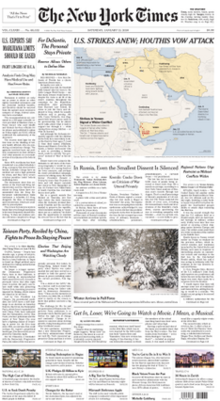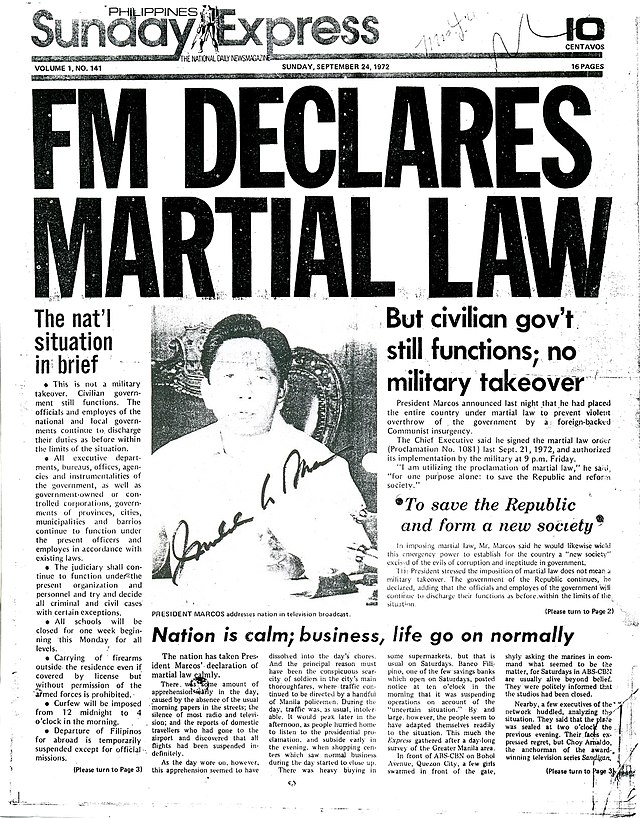News Articles - An Overview
News Articles - An Overview
Blog Article
News Articles Fundamentals Explained
Table of ContentsThe Best Guide To News ArticlesThe 20-Second Trick For News ArticlesThings about News ArticlesExamine This Report on News ArticlesThe smart Trick of News Articles That Nobody is Talking About
Great expertise of different topics gives pupils an one-upmanship over their peers. Although electronic and social networks are conveniently available, we ought to not forget how vital it is to read the papers. Moms and dads should attempt and instill the routine of checking out a newspaper as a day-to-day routine to proceed the heritage of the adored print medium.Newspaper article also include a minimum of among the adhering to important qualities about the designated target market: closeness, prestige, timeliness, human passion, strangeness, or repercussion. The relevant term journalese is often made use of, usually pejoratively, to describe news-style writing. An additional is headlinese. Newspapers generally abide by an expository writing design.
Within these limits, news stories likewise aim to be extensive. Various other factors are entailed, some stylistic and some acquired from the media form. Among the bigger and a lot more highly regarded papers, justness and equilibrium is a significant element in offering info. Discourse is typically restricted to a separate area, though each paper may have a different general angle.
Papers with a global audience, for example, tend to make use of a more formal style of composing. News Articles.; usual style overviews consist of the and the US Information Style Publication.
The Ultimate Guide To News Articles
As a policy, reporters will not utilize a long word when a brief one will do. Information authors attempt to prevent using the very same word more than once in a paragraph (often called an "echo" or "word mirror").
However, headlines sometimes omit the subject (e.g., "Leaps From Boat, Catches in Wheel") or verb (e.g., "Feline lady lucky"). A subhead (likewise subhed, sub-headline, subheading, caption, deck or dek) can be either a subservient title under the main headline, or the heading of a subsection of the article. It is a heading that comes before the major message, or a team of paragraphs of the main text.

of a write-up topic, source, or interviewee), it is described as a pulled quotation or pull quote. Additional signboards of any one of these kinds may appear later on in the post (specifically on succeeding web pages) to lure additional reading. Journalistic sites in some cases use computer animation strategies to exchange one signboard for another (e.g.
Excitement About News Articles
Such billboards are additionally made use of as pointers to the article in other sections of the magazine or site, or as ads for the piece in other magazine or websites. Press launch of the Swiss government. Typical structure with title, lead paragraph (recap in strong), various other paragraphs (information) and get in touch with details.

Instance of a hard-lead paragraph NASA is proposing an additional space task. The budget plan demands roughly $10 billion for the task.
An "off-lead" is the 2nd most vital front page news of the day. To "hide the lead" is to begin the post with background Visit Your URL information or information of secondary importance to the readers, compeling them to read even more deeply right into a short article than they ought to have to in order to discover the crucial points.
6 Simple Techniques For News Articles
Common usage is that or more sentences each create their very own paragraph. Reporters generally define the organization or structure of a news story as an inverted pyramid. The important and most fascinating aspects of a tale are placed at the beginning, with supporting information following in order of decreasing significance.
It allows people to discover a subject to just the depth that their curiosity takes them, and without the charge of information or subtleties that they might consider irrelevant, yet still making that details offered visit this site to much more interested readers. The upside down pyramid framework likewise enables write-ups to be cut to any type of arbitrary size throughout layout, to suit the room readily available.
Some writers start their tales with the "1-2-3 lead", yet there are numerous type of lead available. This layout inevitably starts with a "5 Ws" opening up paragraph (as explained over), followed by an indirect quote that serves to sustain a major element of the very first paragraph, and after that a straight quote to support the indirect quote. [] A twist can refer to multiple points: The last story in the information broadcast; a "satisfied" story to finish the show.
Longer posts, such as magazine cover short articles and the pieces that lead the site here inside areas of a newspaper, are called. Function tales vary from straight information in a number of methods. Foremost is the absence of a straight-news lead, the majority of the moment. Rather than providing the significance of a story in advance, function authors might attempt to tempt readers in.
The 4-Minute Rule for News Articles
An attribute's initial paragraphs usually connect a fascinating minute or occasion, as in an "anecdotal lead". From the particulars of an individual or episode, its sight swiftly expands to abstract principles about the story's topic.

The Editor's Tool kit: A Recommendation Guide for Beginners and Professionals (2001) Allan M. Siegal and William G. Connolly. The New York Times Guidebook of Style and Use: The Authorities Design Overview Utilized by the Writers and Editors of the World's Many Authoritative Paper (2002) M. L. Stein, Susan Paterno, and R.
Report this page